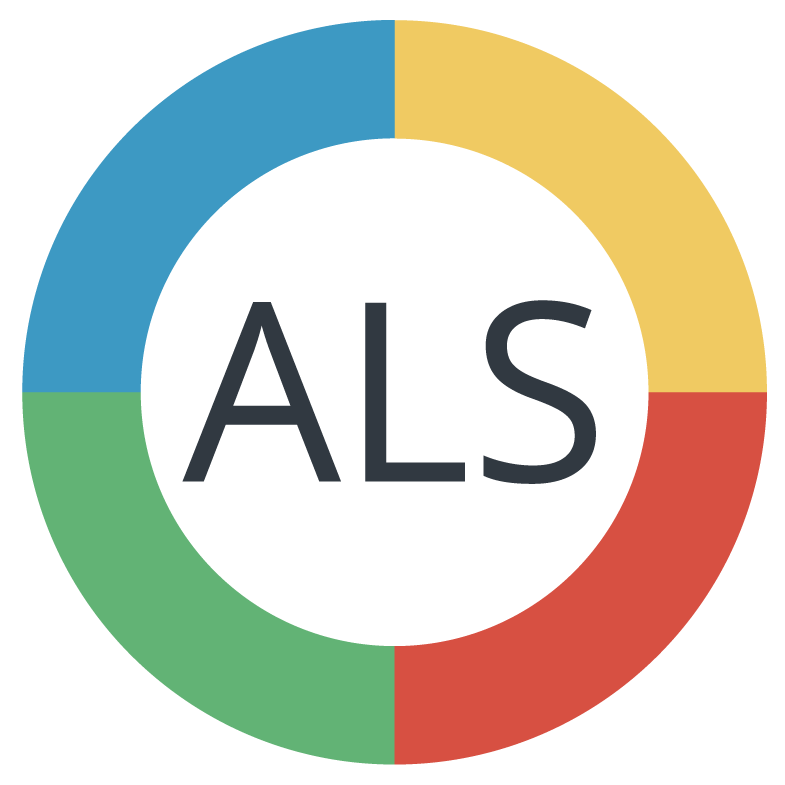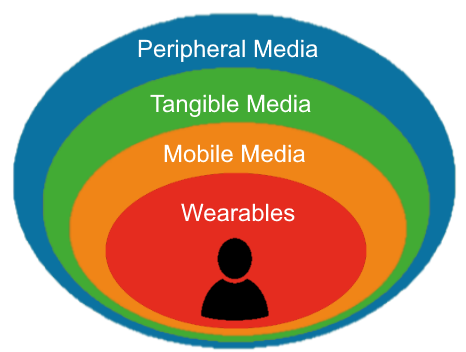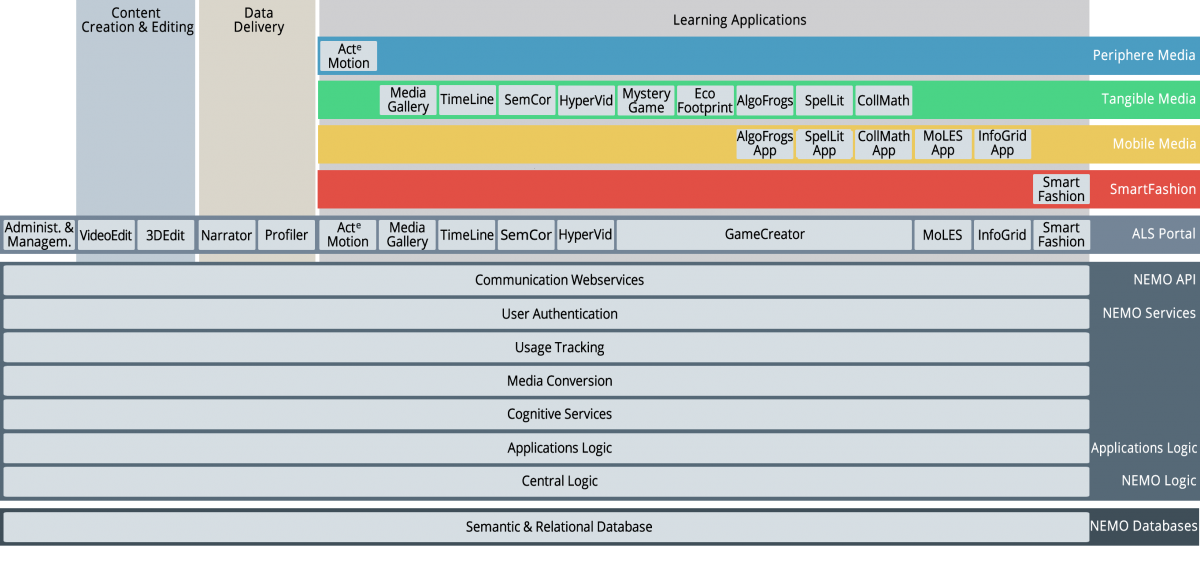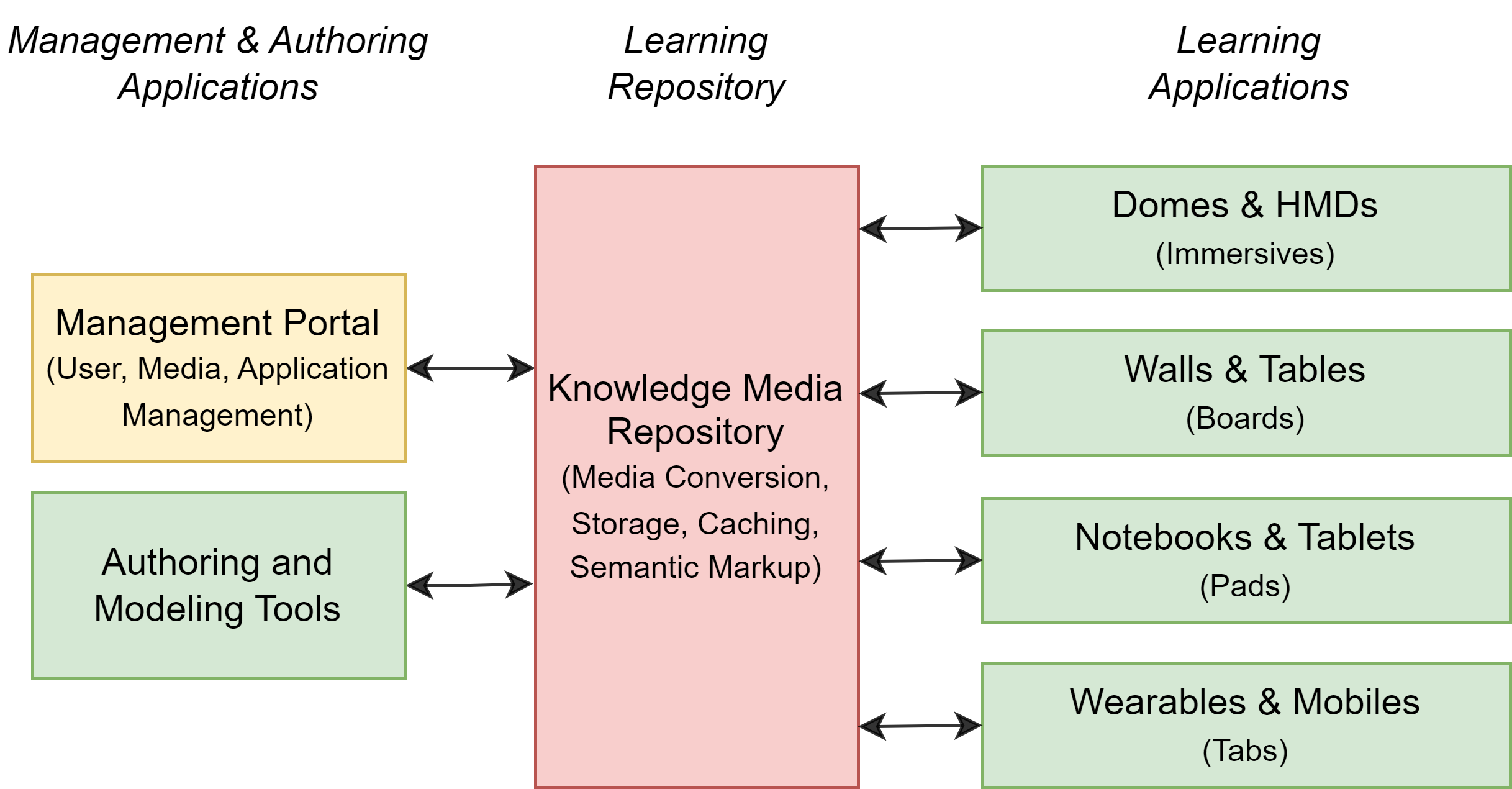
ALS
Ambient Learning Spaces
Sitemap
ALS Models
Shell Model for Media

The system model developed in the context of Ambient Learning System (ALS) is based on a modified and differentiated design of a shell model, which was first used by us in 2004. It addresses the relationship and especially the proximity of learning media to the learner's body, with body-worn and carried media being closest to the body. Media worn on the body include media such as digitally enhanced clothing, glasses, bracelets, or jewelry. Carried media include, for example, smartphones and tablets. They can be understood as media that "extend the self" and fall into the category of mobile media. What is important here is the ubiquitous and pervasive digital embedding of our physical lives.
Peripheral and touchable media, on the other hand, are location-based and stationary media and are understood as "dialogical and interactive counterparts." Peripheral media can detect and analyze movements of our bodies in physical space. This is done, for example, by means of cameras and depth sensors. These recognize the position of people in space and their body gestures. In this way, multiple users can simultaneously control media, e.g. video projections or other interactive applications.
By touchable media, we mean media that we control by touching, related to a specific location. Location-based and mobile media are often intertwined through cross-device interaction (XDI). The model provides a basic thinking and planning approach for designs in the interdisciplinary interplay of pedagogical and informatics elements related to concrete designs of learning contexts and learning applications.
Pedagogical Model
With the changes in society and technology, learning in educational institutions is also changing. Here, it is less and less a matter of teaching content and more a matter of the active process of learning itself. Thus, self-driven learning, supported by an appropriately digitally enriched learning environment, is of great importance.
Methods, technical and social skills are no longer seen separately from one another. They form a unity in the individual development of learners. This happens in a learning culture that favors forms of self-organized and self-directed learning. In this context, the learning path moves next to the goal, i.e. learning is increasingly oriented toward a living learning process in which learners develop independently.
ALS learning media are designed in such a way that a group of learners, coupled with discussion processes, designs semantically annotated media by themselves. In creative-cooperative learning, different complementary subjective ways of seeing and acting are intertwined - coupled with real physical experiences from the realities of the learners' lives. The development of the methodological and social skills of the learners goes hand in hand with the professional ability of the educators to give room to the creativity and self-organization of the learners and to act in a pedagogical manner appropriate to the situation. The ALS research project is dedicated to the central question of how digitally supported learning environments can be designed for children and young people, but also for curious adults in the sense of lifelong learning, in order to encourage sustainable learning.
For this purpose, prototypical systems were designed on the basis of media-didactic methods and tested in the field, especially at learning locations such as schools and museums. The focus of the development lay in the claim to support the mastering of increasingly complex life contexts of the learner through interconnected prototypical learning applications and to meet the current technical and social demands of didactics.For this reason, the development of the learning applications within the framework of the research project was oriented towards seven key elements from current pedagogical research, which were identified as particularly significant for the development of ambient learning environments:
- the learning process should be in the foreground
- self-directed learning should be promoted, the learners should ask "questions to the world" themselves;
- joint, social learning should be promoted - working together in teams up to global cooperation;
- learning should take place in confrontation with the real, everyday environment - the gathering of experiences outside the school building ("other places of learning") should be included;
- during learning, learners should engage a wide range of their senses;
- the use of interactive multimedia systems should open up the possibility of learning with a variety of multimodal learning objects;
- multimedia objects created or annotated by the learners should be directly available in a semantically modeled information model across subjects in other subject contexts.
On this basis, we develop the so-called ALS learning applications together with cooperation partners, among others at schools, in participatory design processes. These are interconnected by means of the cloud-based framework Network Environment for Multimedia Objects (NEMO).
Technical Layer Model of ALS

The ALS applications and the central repository NEMO are shown in the figure above. At the top of the figure are the frontends of the learning applications. In the middle, the front end of the ALS portal as the central management instance. Below, the NEMO framework. The translation of the interactions in the shell model is done by the NEMO framework (Network Environment for Multimedia Objects), a semantically modeled, network-enabled multimedia repository for media didactic applications.NEMO enables the learning applications developed within the project to provide semantically annotated multimedia content in a device-, context-, and user-specific manner. The diagram above provides an overview of the structure of the learning applications conceived and realized within the ALS project and their anchoring in the NEMO framework with predominantly browser-based interfaces. NEMO is the central repository of the ALS media engine.
Technical Structure Model of ALS

As shown in the diagram above, ALS can easily be extended by new teaching and learning application or other administrative components.